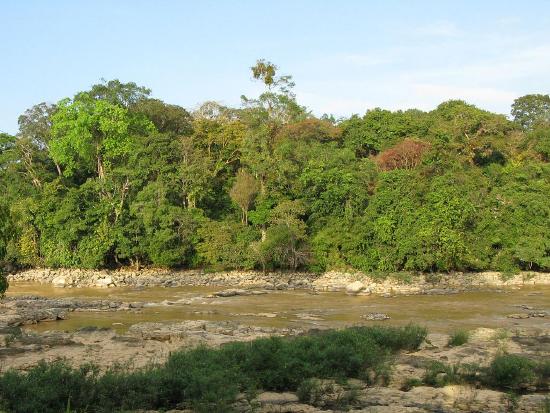5.4.4: Tropical Deciduous Forest
- Page ID
- 50315
Learning Objective
Recognize distinguishing characteristics of tropical deciduous rainforests & plant adaptations of the biome.
This biome is distinguished by seasonal rainfall and a constant warm temperature throughout the year. There are two seasons in this biome, are often referred to as the dry season (with no to little rain) and the wet season (with heavy rain). This biome receives up to 80 inches of rain per year and temperatures range between 68°F to 77°F.
One would find this biome on the north and south ends of tropical rainforests, generally between 10° and 20°. Parts of South America, including parts of amazon and southern Mexico, as well as parts of south east Asia and India contain tropical deciduous forests. This biome is also sometimes called Monsoon forest or mixed deciduous forest, depending on its location and slight variations.

Adaptations
Though there is less biodiversity in this biome than tropical rainforests, there are still a large number of species, including many endemic species that reside here. Deciduous trees lose their leaves during the dry season and re-grow them during the rainy season. This allows the plants to save energy when liquid water is not as available. During the rainy season, the forest is lush and full of foliage, whereas the dry season creates an open canopy, allowing plants under the canopy to access sunlight. You can still see the various layers of vegetation in this biome, including lianas (woody vines) and epiphytes such as bromeliads and orchids. The canopy contains tall trees above and smaller trees and shrubs underneath. Though most of the tall trees are often deciduous, there are still plenty of evergreen plants that retain their leaves throughout the year. Many birds and mammals live in this biome and use the vegetation as habitat and food.
Attribution
- Current page by Kammy Algiers, is licensed CC BY-SA


